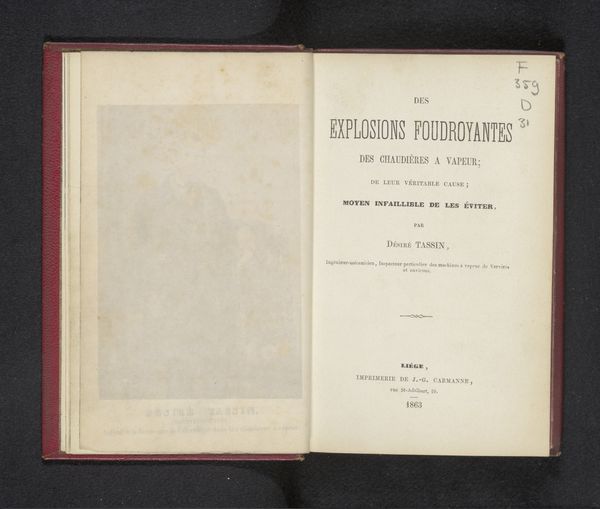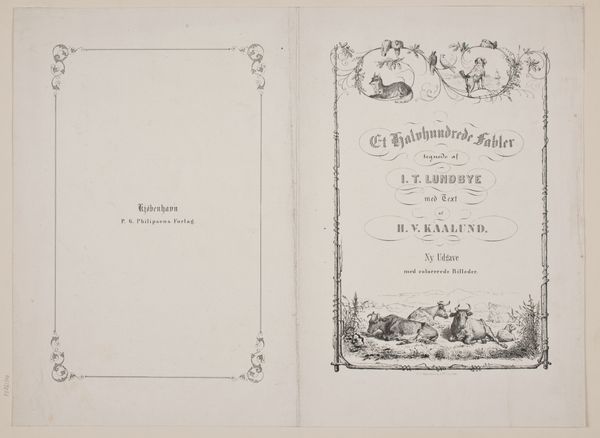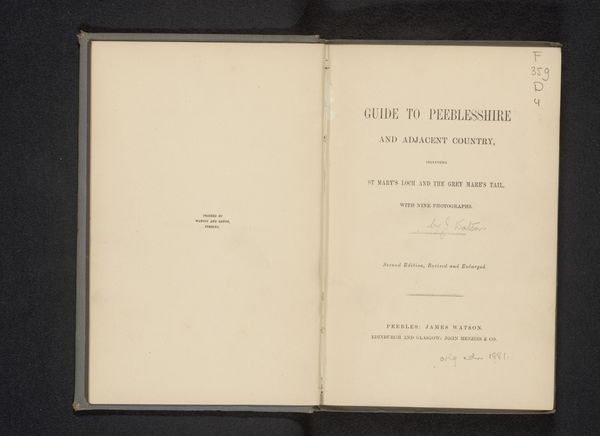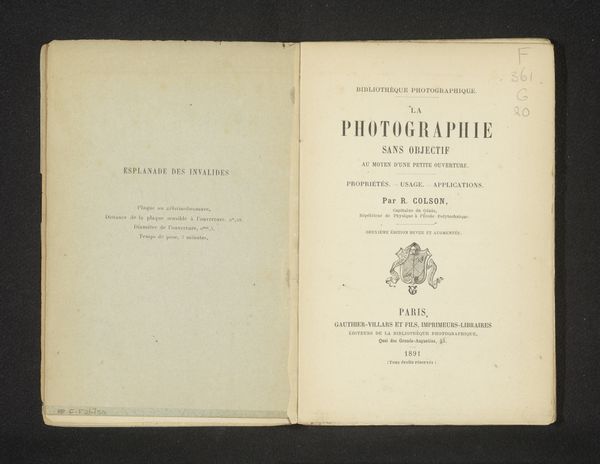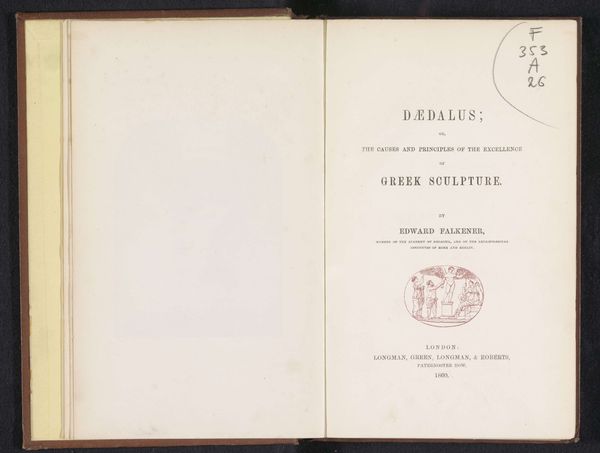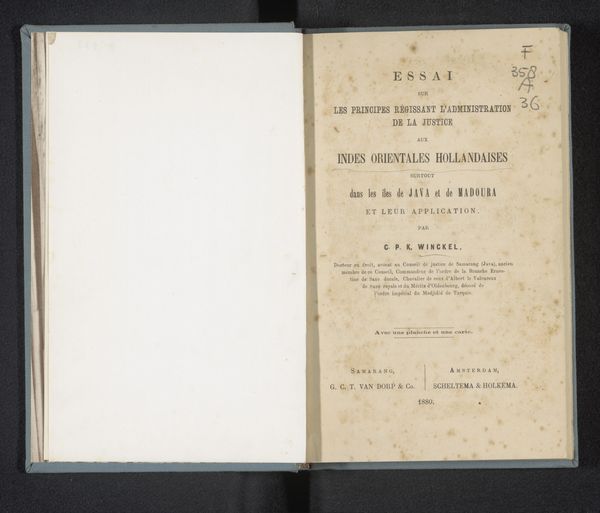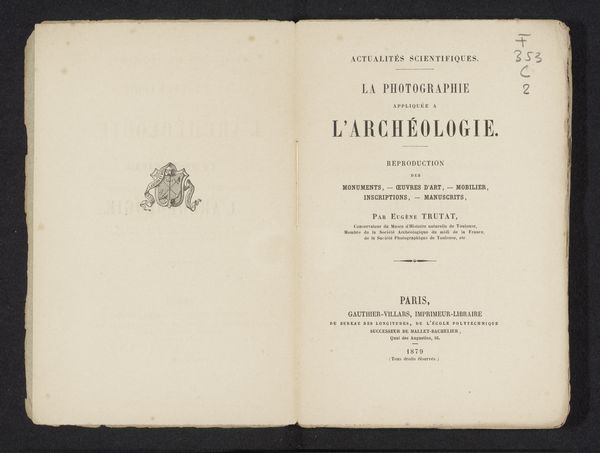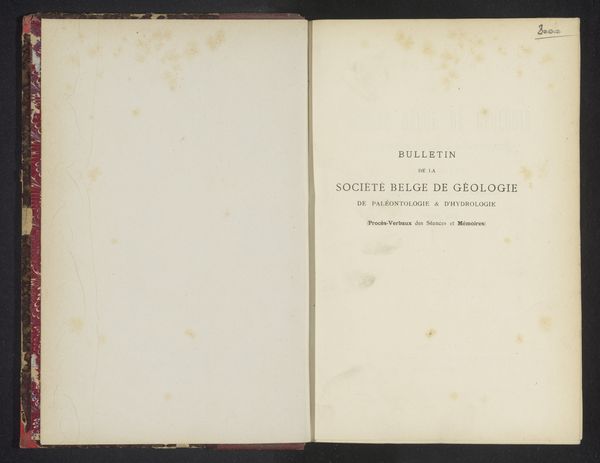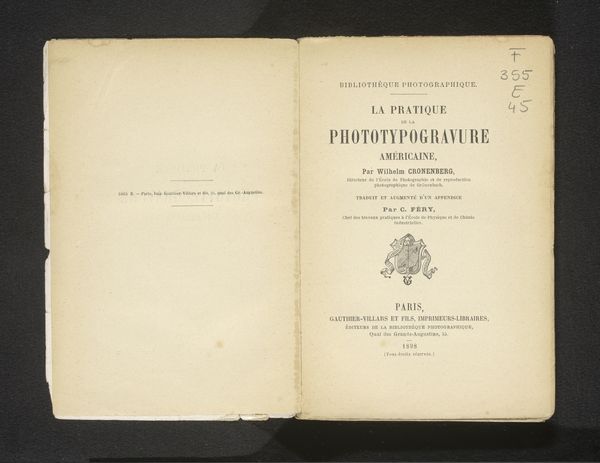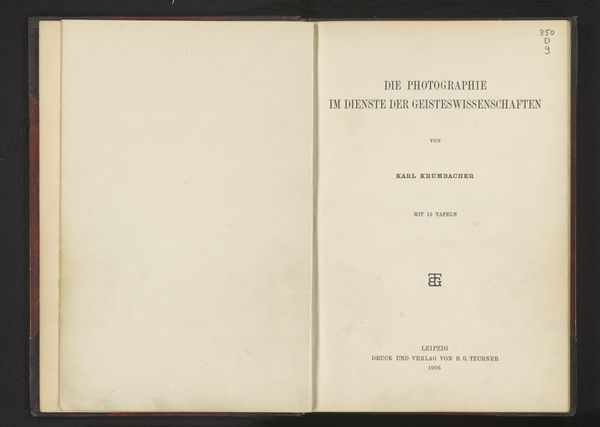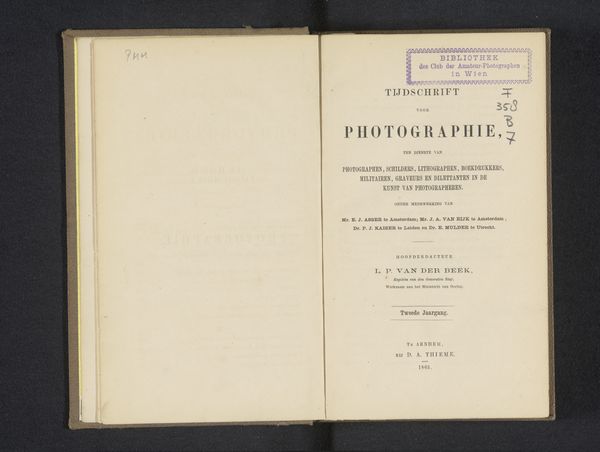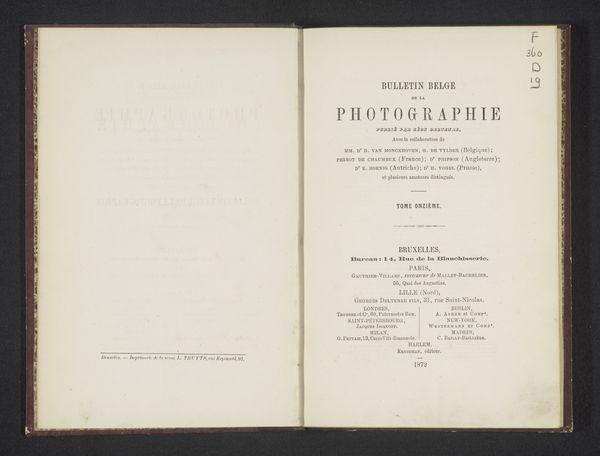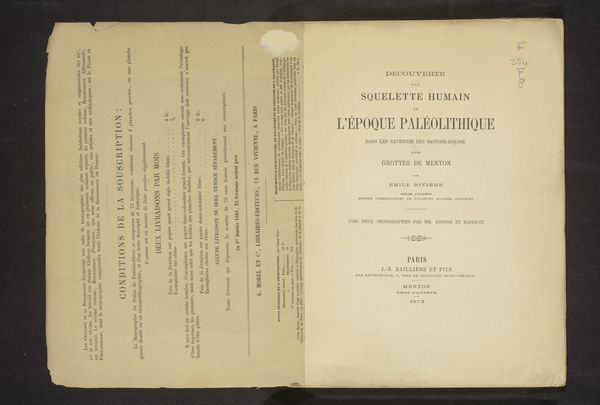
Dimensions: height 224 mm, width 165 mm, thickness 30 mm
Copyright: Rijks Museum: Open Domain
Curator: This is a title page from the 1864 book, "The Choicest Master-Pieces of the Picture-Gallery of Dresden," a photographic publication by Hanns Hanfstaengl. It presents the collection’s highlights through photographic reproductions. Editor: My immediate thought is that this object is delicate and old. The texture and faded ink suggest a fragility and offer a direct, intimate link to the past. Curator: It's more than just aesthetic appeal. Hanfstaengl’s role as "Photographic Artist to His Majesty the King of Saxony and the Royal Family" highlights photography’s burgeoning importance for disseminating power and cultural authority in 19th-century Europe. Photographic reproductions democratized art access in ways previously unimaginable. Editor: Absolutely. Thinking about access also makes me consider who *didn't* have access, though. These publications still circulated among elite circles, reinforcing existing hierarchies even as they widened the audience for "high" art. What narrative did the selected “master-pieces” promote and for whom? Curator: Indeed. And the act of selection itself becomes a powerful form of cultural definition. This book presented a curated vision of artistic excellence tied explicitly to the tastes and priorities of the Saxon monarchy. What's also intriguing is the contrast in text styles, and the book itself is clearly a textile. Editor: I completely agree; there’s a tension here, perhaps intentional, between this book being an ostentatious display, and the idea of broader education. The book itself seems like an artifact made to show off one's proximity to culture. The typography is elegant, but also feels somehow restricted by the layout and border of the inner block. Curator: Considering the role of photography at the time, we should also look at what kinds of labor are visible here – from textile makers to typographers to darkroom workers; it speaks to a massive art world machine beyond just "art for art's sake," so to speak. Editor: Precisely, considering its role within a very specific social hierarchy emphasizes art not just as aesthetic appreciation, but also as a tool in larger societal negotiations about taste and class. It provides valuable insights into the political dimensions of cultural production during that period. Curator: Thinking about this piece really highlights the political role that museums played. Editor: Agreed, considering what it communicates culturally even today.
Comments
No comments
Be the first to comment and join the conversation on the ultimate creative platform.
